What Is Absolutely Needed For A Reef Aquarium
(besides the livestock)

The 20 products you
definitely need,
& the 6 you probably should have
You wish to have a reef aquarium. What do you need to be able to put fish and corals into the aquarium with a reasonable expectation they will survive and thrive? Here is what is needed to have a reef aquarium. There are dozens of other products you might wish to have to help automate your reef aquarium, fine tune your water chemistry and keep the tank clean and attractive, but you can have a beautiful reef with just these critical products.
Along with this article, we recommend you either read the
Coralife LED BioCube Reef Aquarium Setup Guide and watch the
How To Set Up A BioCube Aquarium YouTube Video. This article and video will help show you how to put these concepts into practice.
NOTE: We also have an article on What Is Absolutely Needed For A Saltwater Fish-Only Aquarium
Protein Skimmer

A protein skimmer is necessary for filtration in a reef aquarium. We recommend the protein skimmers from
Reef Octopus,
Maxspect,
IceCap,
Tunze &
Simplicity. Our protein skimmer section organizes skimmers by tank size and where the skimmer is located (
hang-on back, in sump or in tank). Some “complete” nano tanks, such as the
Coralife BioCube, have a filtration chamber built into a back compartment of the aquarium to house the skimmer. A sump is a great place to put a protein skimmer as it removes it from view. For those without a sump you can use a
hang on the back skimmer.
All aquariums should have mechanical filtration, biological filtration and chemical filtration. The protein skimmer provides mechanical filtration in a reef tank and the rock will provide
biological filtration. With
chemical filtration the products you use will depend on your situation and what you want to remove from your aquarium. However, carbon should always be used.
Carbon is a great way to remove odors and discoloring compounds from the
water and is the easiest way to improve water clarity. If you notice that your aquarium has a smell, or your water has a
tint to it, carbon will help.
Further Reading:
-
Protein Skimmer Overview
-
Protein Skimmer Troubleshooting-
Do You Need a Protein Skimmer?
Lighting
 Lighting
Lighting is essential in reef aquariums and is usually your most expensive purchase. When choosing a light be sure it is made specifically for reef aquariums.
Many nano tanks, such as the
BioCube, come with sufficient lighting. If you need a light for your tank, we recommend using LED lights because in the long run they will save you money because they are energy efficient and generate less heat than fluorescent lights (
and you won’t have to change the bulbs). For all reef aquariums the best choice is the
Kessil LED Lights. There are four sizes to choose from, and with larger tanks you will use multiples of Kessil Lights. Refer to the
Reef Aquarium Lighting Chart to figure out what Kessil Lights you will need for your aquarium.
If the Kessil Lights are too pricey, or you absolutely want a fixture instead of a pendant light, then you might consider the
Fluval Marine & Reef 3.0 Lights.
You will want to run your aquarium lights for a consistent number of hours every day. Some lights come with controllers/timers for turning the light on and off. For lights without that capability you will need a
light timer.
Further Reading:
-
How Long Should Aquarium Lights Be On?
-
Getting the Most out of Your Aquarium Light
-
Are There Reasons to Get Anything Other Than An LED Light For Your Aquarium?
Testing

Testing is needed to ensure that your water is safe for your fish and corals. When you first set up a tank you will want to test for ammonia, nitrite, nitrate and alkalinity. Before adding corals you will also want to test the calcium levels.
Salifert has test kits for calcium, alkalinity and nitrate.
Aquarium Pharmaceuticals has test kits for nitrite and ammonia. They also have multi-test packages for saltwater and reef tanks.
Once your tank is set up and running calcium and alkalinity will be the most critical tests.
For purposes of determining the cause of algae you probably will also want to test for
phosphate and nitrate.
You will need to test the salinity of your saltwater using a
hydrometer or refractometer.
Refractometers are more expensive but are longer lasting and more accurate.
We offer our own refractometer, the
MarineAndReef.com Reefractometer.
Further Reading:
-
Aquarium Testing Recommendations
-
Hydrometers Vs. Refractometers
-
How to Accurately Test Aquarium Water
Maintenance

You will need to clean your aquarium to keep it healthy and attractive. For maintenance you will need a good gravel vac and algae magnet. The
Python Gravel Vacs and the
Flipper Magnet Cleaners are good choices. Make sure to look at the depth of your aquarium when choosing a gravel vac and consider the thickness of your glass when choosing an algae magnet.
Further Reading:
-
Cleaning Basics 101: Five Pro Cleaning Tips
-
Top 10 Aquarium Maintenance Hacks
-
Python No Spill Water Change System
(
YouTube Video)
Saltwater

All of the
aquarium salts we sell are high quality. For smaller tanks we recommend the
Two Little Fishies AccuraSea1 because it comes in five gallon packets that make it easy to mix saltwater in five gallon increments. You might consider the
Two Little Fishies Small Saltwater Aquarium Salt Mixing & Water Change Package for smaller reef aquariums.
For larger reef aquariums the
Aquarium Systems Salts are all good choices.
Mixing saltwater should start with RO/DI water. You can buy the water at your local fish store or grocery store or make your own using an
RO/DI System. Ideally, you will want to use one that is an RO/DI (DI stands for deionization) instead of just RO (reverse osmosis).
Further Reading:
-
RO & RO/DI System Overview
-
Aquarium Water Changes: Making It Simple
Aquascape

You will need rock and sand in your reef aquarium. We recommend using an aragonite sand substrate and either live rock or dry reef rock.
CaribSea Florida Crushed Coral and
CaribSea Seafloor Special Grade Reef Sand are good sand substrate choices. Live rock is harvested from the ocean and can be purchased locally. Dry rock is cheaper than live rock and creating interesting structures is easier with dry rock. You can use
Two Little Fishies STAX Rock or
CaribSea LifeRock Shapes. You will need coral/coral rock
adhesive to glue your rocks together and attach coral to the rocks.
To protect the bottom of your tank when you place the rock in the tank, you might want to use some
Egg Crate under the substrate.
Further Reading:
-
BioCube 32 Rock, Sand, and Salt Package Guide (
this is specific to the BioCube, but the concepts apply to all reef aquariums)
Additives

You will notice on our web site we have hundreds of different additives for reef aquariums. The good news is that most of these are for advanced aquarists looking for specific results. Most aquariums with sufficient water changes will just need to add calcium, alkalinity, and a general trace element blend. Calcium and alkalinity (buffer) should be added based on need after testing. The
Seachem Reef Advantage Calcium and the
Seachem Marine Buffer are excellent choices.
Minor and trace elements are very hard to measure. We suggest using a general supplement such as
Julian Sprung's SeaElements once a week.
As an alternative to adding additives such as calcium, buffer and trace elements, you can do frequent and large water changes. When you do water changes you will be adding fresh salt that has calcium and trace elements. Frequent and large water changes we describe as at least 50% once a month. This can be a manageable task with a BioCube 32, but for a 200 gallon reef tank you might prefer to add calcium, buffer and trace elements rather than changing out 100 gallons once a month.
When getting your tank up and running, and to speed up the nitrification process, you might want to use a bacteria such as
Brightwell Aquatics Microbacter7.
Further Reading:
-
Additives Overview
-
How To Color Your Corals
Water Flow

Water movement is incredibly important in reef aquariums. As a general rule you will want to have enough water movement to turn over your aquarium’s total water volume at least 10 to 15 times per hour. More is better. When calculating the total water turnover you can add together the flow of all the pumps in your system.
With the
Coralife BioCube and other integrated nano aquariums, there is a circulation pump in the back chamber. We recommend adding an additional powerhead in the tank to increase flow.
Tanks without a back chamber or a sump will require powerheads inside the tank. We recommend using two—one in each corner. The
Hydor Koralia is a great choices. Using a controller such as the
SmartWave Circulation Pump Timer with the Koralia to create wave flow is recommended.
Larger reef aquariums with sumps can count the return pump flow from the sump but may also require powerheads in the tank for additional flow if the return pump volume is not at least 10 to 15 times the tank volume. We have large aquarium pumps from
Little Giant,
Dolphin,
Iwaki,
Lifegard, and
Reeflo. DC pumps, such as the
Reef Octopus Controllable, are very energy efficient.
In general, using powerheads inside the tank is a very efficient way to move large volumes of water.
Along with the Koralia and Mover, we recommend the
Maxspect Gyre and IceCap Gyre Pumps. These pumps have a unique design that creates realistic wave flow with an absence of dead spots.
Further Reading:
-
Pump Overview
-
Tank Turnover: How Much Do You and How Do You Get It-
Why Should You Use a Wavemaker
Temperature Control

Saltwater aquariums need to have a temperature between 76-82 degrees. You will need a
thermometer to know your tank temperature.
If the room where your aquarium is located has a steady temperature of around 75-80 degrees, you probably will not need a heater or chiller. These days, with low heat LED lights and DC pumps, the need for chillers is less common, but if you keep the room with your aquarium at a temperature over 80 degrees you will probably need a chiller (
the equipment will raise the temperature over the 82 degree threshold).
With
chillers we highly recommend that you get a bigger chiller than is absolutely necessary as it will not cost much more. In the event of a heat wave or a air conditioner failure that extra capacity may save your aquarium’s inhabitants.
If your aquarium temperature is dropping below 76 degrees at any time you will need a
heater. All the heaters we carry have aquarium size ratings. Keep in mind the rating assumes you only need to raise the temperature by 10 degrees.
Further Reading:
-
Heater Overview
-
Chiller Overview
GF/CI Outlet
Your home may have GF/CI outlets, but if they don’t you might want to have one installed for your aquarium equipment.
Fish Food

This really depends on the type of fish you purchase. Ask at the aquarium store about the best food for the fish you purchase.
If you travel and no one is at home to take care of your fish, you might consider an automatic
fish feeder.
Fish Net
You will always want to use a
fish net to move the fish you purchase at the aquarium store.
Summary
Every reef aquarium
definitely needs these 20 Products:
1.
Aquarium (& stand)
2.
Carbon
3.
RO/DI water (you can make your own or purchase it from the store as needed)
4.
Salt
5.
Hydrometer or refractometer
6.
Thermometer
7.
Protein skimmer
8.
Reef light
9.
Pumps
10.
Test kits
11.
Calcium
12.
Alkalinity buffer
13.
Trace element supplement
14.
Rock
15.
Substrate/Sand
16.
Adhesive
17.
Gravel vac
18.
Algae magnet
19.
Fish food
20.
Fish net
Your reef aquarium
might need these products:
1. If your tank gets above 82 you need a
chiller
2. If your tank gets below 76 you need a
heater
3.
Fish feeder
4. If your light does not have a timer/controller you will need a
timer
5. If you do not have a GF/CI outlet, purchase an adapter
6. To speed up the nitrification process in new tanks you can use a bacteria such as
MicroBacter7.
We also recommend getting a controller to work with your Hydor Koralia (
SmartWave). It isn't absolutely necessary, but the wave movement will greatly benefit the health of the corals and fish and will help to get detrius into the protein skimmer.
For help in getting your reef tank started we recommend you read the
Coralife LED BioCube Aquarium Setup Guide. The guide is specfic to the Coralife BioCube, but most of the concepts presented in the article apply to all reef aquariums. There are links to videos we produced that will help with cycling your tank, adding livestock and much more.
If you need further help please always feel free to shoot an Email to
[email protected].







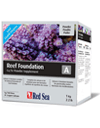
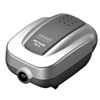


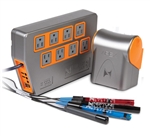

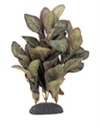

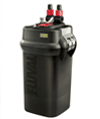

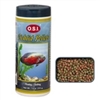





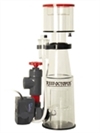





 A protein skimmer is necessary for filtration in a reef aquarium. We recommend the protein skimmers from
A protein skimmer is necessary for filtration in a reef aquarium. We recommend the protein skimmers from  Lighting
Lighting Testing is needed to ensure that your water is safe for your fish and corals. When you first set up a tank you will want to test for ammonia, nitrite, nitrate and alkalinity. Before adding corals you will also want to test the calcium levels.
Testing is needed to ensure that your water is safe for your fish and corals. When you first set up a tank you will want to test for ammonia, nitrite, nitrate and alkalinity. Before adding corals you will also want to test the calcium levels.  You will need to clean your aquarium to keep it healthy and attractive. For maintenance you will need a good gravel vac and algae magnet. The
You will need to clean your aquarium to keep it healthy and attractive. For maintenance you will need a good gravel vac and algae magnet. The  All of the
All of the  You will need rock and sand in your reef aquarium. We recommend using an aragonite sand substrate and either live rock or dry reef rock.
You will need rock and sand in your reef aquarium. We recommend using an aragonite sand substrate and either live rock or dry reef rock.  You will notice on our web site we have hundreds of different additives for reef aquariums. The good news is that most of these are for advanced aquarists looking for specific results. Most aquariums with sufficient water changes will just need to add calcium, alkalinity, and a general trace element blend. Calcium and alkalinity (buffer) should be added based on need after testing. The
You will notice on our web site we have hundreds of different additives for reef aquariums. The good news is that most of these are for advanced aquarists looking for specific results. Most aquariums with sufficient water changes will just need to add calcium, alkalinity, and a general trace element blend. Calcium and alkalinity (buffer) should be added based on need after testing. The  Water movement is incredibly important in reef aquariums. As a general rule you will want to have enough water movement to turn over your aquarium’s total water volume at least 10 to 15 times per hour. More is better. When calculating the total water turnover you can add together the flow of all the pumps in your system.
Water movement is incredibly important in reef aquariums. As a general rule you will want to have enough water movement to turn over your aquarium’s total water volume at least 10 to 15 times per hour. More is better. When calculating the total water turnover you can add together the flow of all the pumps in your system.
 Saltwater aquariums need to have a temperature between 76-82 degrees. You will need a
Saltwater aquariums need to have a temperature between 76-82 degrees. You will need a  This really depends on the type of fish you purchase. Ask at the aquarium store about the best food for the fish you purchase.
This really depends on the type of fish you purchase. Ask at the aquarium store about the best food for the fish you purchase.